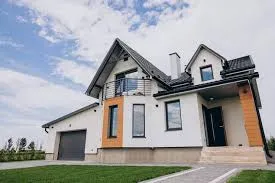When embarking on an exterior renovation project, selecting the right materials is crucial to achieving a successful and lasting transformation. The choice of materials impacts not only the aesthetic appeal but also the durability and maintenance of the property. With many options available, it’s essential to understand how different materials align with your renovation goals. We will explore various factors, including the climate, architectural style, budget, and desired maintenance level. By making informed choices, you can ensure that your exterior renovation meets functional and visual expectations.
Understanding Climate and Weather Conditions
The local climate plays a significant role in determining the appropriate materials for your exterior renovation. Different materials respond differently to weather conditions, such as temperature fluctuations, humidity, and precipitation. For example, materials like fiber cement siding or treated wood are often preferred in regions with heavy rainfall due to their water-resistant properties. In contrast, areas prone to high temperatures and intense sunlight may benefit from materials with reflective properties to minimize heat absorption. Additionally, understanding the potential for extreme weather conditions, such as hurricanes or heavy snow, can guide the selection of durable materials that withstand harsh elements. Considering these factors ensures that your chosen materials perform well and maintain their integrity over time.
Aligning Materials with Architectural Style
The architectural style of your home is another important consideration when choosing exterior renovation materials. Different materials complement different styles, and aligning your choices with the existing or desired architectural theme enhances the overall aesthetic. For instance, a traditional colonial home might benefit from classic materials such as brick or wood siding, which evoke a timeless charm. In contrast, modern homes often incorporate sleek materials like metal or glass to achieve a contemporary look. By selecting materials that harmonize with your home’s architectural style, you create a cohesive appearance that enhances curb appeal and property value. Understanding how materials can blend with or contrast against architectural features helps make choices that reflect your design vision.
Budget Considerations and Cost-Effectiveness
Budget is a significant factor in any renovation project, and material selection significantly impacts overall costs. It’s crucial to balance your budget with the long-term benefits of your chosen materials. While some materials may have a higher initial cost, their durability, and low maintenance requirements can result in cost savings over time. For example, while natural stone may be more expensive initially, it often requires less upkeep and lasts longer than cheaper alternatives. On the other hand, materials with lower upfront costs might need frequent repairs or replacements. Evaluating the lifecycle costs of materials, including maintenance and potential repairs, allows you to make cost-effective decisions that align with your financial plans.
Maintenance Requirements and Longevity
Different materials come with varying maintenance needs, which can influence your choice depending on how much upkeep you’re willing to commit to. Materials such as vinyl siding and metal panels often require minimal maintenance, making them suitable for those seeking a low-maintenance exterior. Conversely, while aesthetically pleasing, natural wood siding typically demands regular painting or staining to protect it from the elements. Understanding the maintenance requirements of each material helps you select options that fit your lifestyle and maintenance preferences. Additionally, considering the longevity of materials ensures that you choose options that will withstand the test of time, reducing the need for frequent renovations.
Environmental Impact and Sustainability
In today’s environmentally conscious world, considering the environmental impact of your materials is increasingly important. Sustainable materials, such as those made from recycled content or those with a lower environmental footprint during production, can contribute to greener renovation practices. For instance, products like bamboo siding or recycled metal panels offer eco-friendly alternatives to traditional materials. By selecting materials with sustainable attributes, you contribute to environmental conservation and enhance your home’s energy efficiency. Sustainable materials can help reduce energy consumption by providing better insulation and reducing the need for heating and cooling. Exploring environmentally friendly options aligns with modern values and contributes to the overall sustainability of your renovation project.
Choosing Materials That Fit Local Regulations
Local building codes and regulations can influence material choices for your exterior renovation. Different regions may have specific requirements or restrictions regarding the materials used in construction due to safety, environmental, or aesthetic considerations. For example, areas prone to wildfires may have regulations that mandate fire-resistant materials for siding and roofing. Ensuring that your chosen materials comply with local codes avoids potential legal issues and ensures that your renovation meets safety standards. Consulting with local authorities or renovation professionals can help you navigate these regulations and select materials that meet all requirements. Adhering to local guidelines ensures that your renovation project is compliant and safe.
Selecting the right materials for your exterior renovation project from McMurray Builders involves carefully considering various factors, including climate, architectural style, budget, maintenance needs, environmental impact, and local regulations. By understanding how these elements affect material performance and aesthetics, you can make informed decisions that align with your renovation goals. The right choice of materials enhances your home’s appearance and ensures durability and functionality. Ultimately, a well-considered selection of materials contributes to a successful renovation project that meets both your practical needs and design aspirations.






